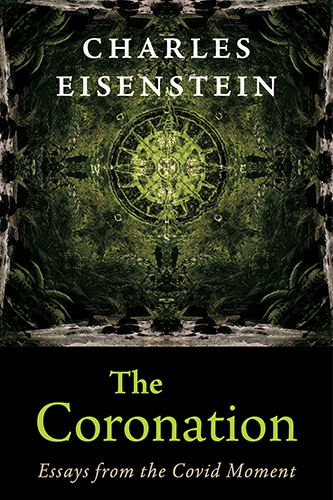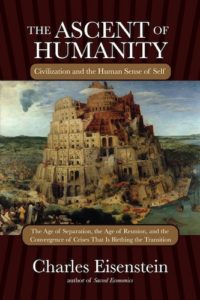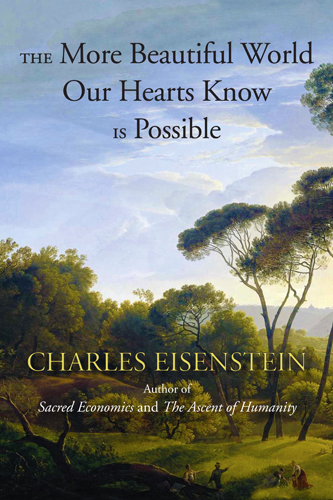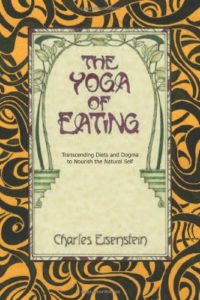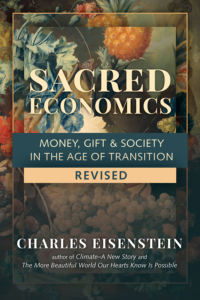The More Beautiful World Our Hearts Know Is Possible
Chapters
Chapter 32: Miracle
Working on the level of story has two dimensions. First is to disrupt the old, which says, “What you thought was real is just an illusion.” Second is to offer a new, which says, “The possible, and the real, are much grander than you knew.” The first, we experience as crisis and breakdown. The second, we experience as miraculous. That’s what a miracle is: not the intercession of an external divinity in worldly affairs that violates the laws of physics, but something that is impossible from within an old Story of the World and possible from a new one.
Because a miracle is (by this definition) impossible from where we stand today, we cannot force the universe to produce one. It is beyond our understanding of cause and effect. We can, however, give the experience of miracle to another person. To the extent we stand in a new story, we all have the power to be miracle-workers. Like Chris, we all have the power to perform acts that violate the old Story of the World.
A miracle is an invitation to a larger reality. Maybe I am more stubborn than most, but it typically takes repeated miracles for me to accept the invitation they hold. The perceptions of separation—for example, linear causality and rational self-interest—are embedded deep within my cells, for I am a product of that age.
At age twenty-one I arrived in Taiwan, uncomfortable in my own culture, in which I felt like an alien, but wedded still to many aspects of its defining stories. True, thanks to my somewhat leftist political upbringing I was cognizant of the bankruptcy of the mythology of progress and economic globalism, but I accepted without question the Scientific Method as the royal road to truth, and believed that science as an institution had arrived at a fairly complete general understanding of how the universe worked. I was, after all, a Yale graduate, trained in mathematics and analytic philosophy. It wasn’t long, though, before my story of the world came under assault. I had experiences with Chinese medicine and qigong that were impervious to my best efforts to explain away. I had a powerful LSD trip that melted what I’d called “reality” into an ocean of mind. I soaked up the Buddhist and Taoist thought that suffused the island, and heard countless stories of ghosts, Taoist shamans, and other weirdness from respectable people that I could dismiss only with a strenuous effort of interpretation. (Maybe they are trying to impress the foreigner. Maybe they are ignorant and superstitious, given to seeing what isn’t there.) I found myself increasingly uncomfortable with the cultural and personal arrogance I had to assume in order to preserve my worldview. To dismiss an entire culture’s perceptions of the world in favor of the dogma of objectivity and reductionism seemed akin to the very same economic and cultural imperialism that I was already aware of. Here was a kind of conceptual imperialism, to see an entire culture through a lens of anthropology or through a narrative of cognitive development that, in both cases, was heavily freighted with the power relations that rule our world.
At the same time, I encountered books that suggested that the Western worldview was crumbling from within. Of particular impact was the work of the Nobel laureate Ilya Prigogine and the physicist David Bohm, two of the twentieth century’s greatest scientists, who upended my understanding of causality and my assumption, which I’d never thought to question on scientific grounds, that the universe is devoid of an inherent order or intelligence. This liberated me from the trap of dualism: to see the phenomena I’d become aware of in Taiwan as the exercise of some separate, nonmaterial realm of spirit; to conclude that science has its domain, and spirituality another. But now I could see that materiality was much more than we had made of it; that potentially, it could include all the phenomena we associate with spirit, and that this could happen, not by reducing, dismissing, or explaining away the “spiritual,” but, on the contrary, only by expanding the material far, far beyond what any scientist was comfortable with.
We are afraid of anything that disrupts our Story of the World, anything that challenges the rules and boundaries of the real. We are afraid of miracles, yet we crave them as well. It is our greatest desire and our greatest fear. When the story we live in is young, the fear is stronger than the desire. A young story has a strong immune system. It can dispose of conflicting data points with ease. I see a dangji (a Taiwanese shaman) in a shaking trance, carrying a burning hot brazier in his bare hands—well, it must not really be as hot as it looks. A taxi driver tells me of the time he picked up an odd woman in a wedding dress and drove her to a street number that didn’t exist, and when he turned to ask her she had disappeared from the cab—well, he was probably drunk that night, or maybe he was trying to impress the gullible foreigner. I sprain my ankle so severely I cannot walk, and am taken to a one-room cement clinic, where the doctor, smoking a cigarette, digs his thumbs into the swollen, inflamed flesh for five minutes of torture, puts some paste on it, wraps it up, and sends me home, and the ankle is completely better the next day—well, it must not have really been that bad, it must not have actually been swollen to double its size like I thought, and in any case it would have gotten better anyway. I visit a qigong master, who taps me on a few spots on my body to “clear my meridians,” and I start pouring sweat within seconds and walk out half an hour later feeling like a million bucks—well, I was probably hot going in there, and didn’t notice that the room was extra hot, and as for the intense tingling I felt when he showed us what projecting qi was, I must have been imagining it. The hundreds of people studying with that man—they must be dupes, bamboozled by his slick talk into believing an impossibility, probably psychologically dependent on the bogus spiritual teachings he peddles. I don’t even need to know what those are or examine whether they are bogus or not—they must be, because otherwise my world falls apart. The same goes for all the claims and lifelong careers of hundreds of thousands of homeopaths, naturopaths, acupuncturists, chiropractors, energy healers, and all the others who practice modalities for which there is “no scientific evidence”—controlled, double-blind studies in peer-reviewed journals. If there were any merit to their ideas, surely the unbiased institutions of science would recognize it by now. Those practitioners have been deceiving themselves, selectively remembering only those cases where the patient got better—and some inevitably will get better even with no treatment at all. They are misguided, self-deceiving, poor observers of reality. Unlike me, and the people I agree with. We are the ones who base our beliefs on evidence and logic.
You can see how robust a Story of the World can be, and how comprehensive. Ultimately, our beliefs about what is and is not scientifically acceptable implicate our trust in existing social structures and authorities. The accusations of naiveté, of mental derangement, of being out of touch with reality, and the emotional energy behind those accusations, stem from a feeling of threat. The threat is real. What is being threatened is the fabric of the world as we have known it. Ultimately, the same fear is behind the mental calisthenics of environmental skeptics or central bankers or anyone else who ignores the increasingly obvious signs that our system is doomed, and that the beliefs we took for granted, the institutions that seemed so permanent, the truisms that seemed so reliable, and the habits of life that seemed so practical are serving us no longer.
How to help people, and the systems that comprise them, to let go of the old story? A direct assault—matching evidence with evidence and logic with logic—only intensifies the fear and the resistance. Not that I don’t think that there is a logic behind my beliefs, or that they can only be maintained against the evidence. Quite the contrary. But as I have described, something else has to happen, something deeper has to shift, before someone becomes willing to even look at the evidence. As healers and change agents, we have to address this deeper thing, the wound at the heart of the Story of Separation. We have to think instead about extending an invitation into a larger world. That is the essence of our work as miracle-workers.
Stories, like all beings, have a life span. In their youth, their immune system is strong, but as time goes on they become increasingly unable to withstand the contrary evidence and experiences that pile up. In the end, I could no longer believe my own story. Who I had to be to maintain it—cynical, dismissive, patronizing, holding back from new experiences—became intolerable. As the old world became intolerable, invitations from the new came faster and stronger.
As a story ages, cracks appear in its boundary, in the shell of the cosmic egg. A miracle is the name we give to the light that shines through from a larger, more radiant world. It says not only that reality is bigger than we thought it was, but that that bigger reality is coming soon. It is both a glimpse and a promise.
To the extent that we ourselves are living in the realization of interbeing, we too are able to become miracle-workers. That doesn’t mean that what we do seems miraculous to ourselves—it fits in with our expanded understanding of the nature of life and causality. For example:
- When one is aligned with the purpose of service, acts that seem exceptionally courageous to others are a matter of course.
- When one experiences the world as abundant, then acts of generosity are natural, since there is no doubt about continued supply.
- When one sees other people as reflections of oneself, forgiveness becomes second nature, as one realizes “But for the grace of God, so go I.”
- When one appreciates the order, beauty, mystery, and connectedness of the universe, a deep joy and cheerfulness arises that nothing can shake.
- When one sees time as abundant and life as infinite, one develops superhuman patience.
- When one lets go of the limitations of reductionism, objectivity, and determinism, technologies become possible that the science of separation cannot countenance.
- When one lets go of the story of the discrete and separate self, amazing intuitive and perceptual capabilities emerge from lifelong latency.
These and many other miracles are the landmarks of the territory of interbeing.


